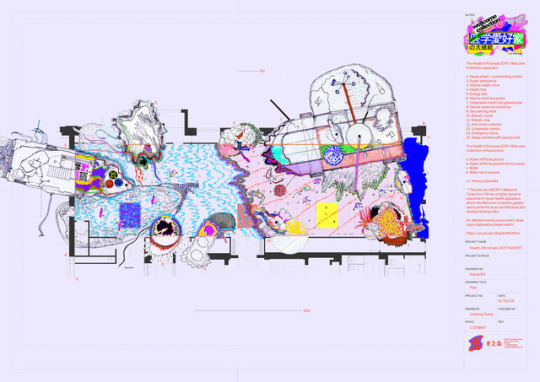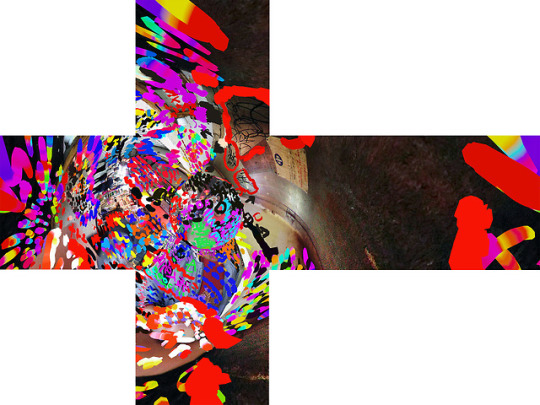Photo

IN: 0420
林田球訪談①・ドロヘドロ/異獸魔都(季刊エス1號刊載)
http://q.saturnlog.com/kikans1/
0 notes
Photo

IN: 0417
A Thousand Plateaus
A Thousand Plateaus is the second part of Deleuze and Guattari's landmark philosophical project, Capitalism and Schizophrenia - a project that still sets the terms of contemporary philosophical debate. Written over a seven year period, A Thousand Plateaus provides a compelling analysis of social phenomena and offers fresh alternatives for thinking about philosophy and culture. Its radical perspective provides a toolbox for 'nomadic thought' and has had a galvanizing influence on today's anti-capitalist movement.
0 notes
Photo

IN: 0412
Ghetto at the Center of the World: Chungking Mansions, Hong Kong
There is nowhere else in the world quite like Chungking Mansions, a dilapidated seventeen-story commercial and residential structure in the heart of Hong Kong’s tourist district. A remarkably motley group of people call the building home; Pakistani phone stall operators, Chinese guesthouse workers, Nepalese heroin addicts, Indonesian sex workers, and traders and asylum seekers from all over Asia and Africa live and work there—even backpacking tourists rent rooms. In short, it is possibly the most globalized spot on the planet.
But as Ghetto at the Center of the World shows us, a trip to Chungking Mansions reveals a far less glamorous side of globalization. A world away from the gleaming headquarters of multinational corporations, Chungking Mansions is emblematic of the way globalization actually works for most of the world’s people. Gordon Mathews’s intimate portrayal of the building’s polyethnic residents lays bare their intricate connections to the international circulation of goods, money, and ideas. We come to understand the day-to-day realities of globalization through the stories of entrepreneurs from Africa carting cell phones in their luggage to sell back home and temporary workers from South Asia struggling to earn money to bring to their families. And we see that this so-called ghetto—which inspires fear in many of Hong Kong’s other residents, despite its low crime rate—is not a place of darkness and desperation but a beacon of hope.
Gordon Mathews’s compendium of riveting stories enthralls and instructs in equal measure, making Ghetto at the Center of the World not just a fascinating tour of a singular place but also a peek into the future of life on our shrinking planet.
0 notes
Photo
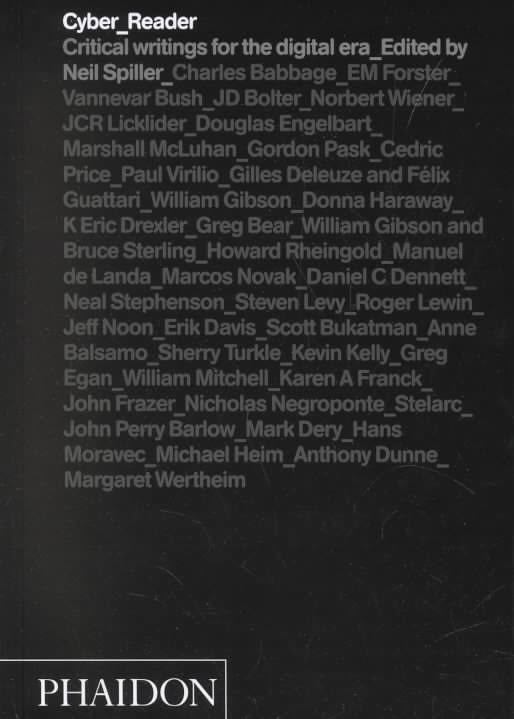
IN: 0409
Cyber ̲reader: critical writings for the digital era
Cyber Reader is an anthology of extracts from key texts related to the theme of cyberspace - the virtual communicative space created by digital technologies. Approaching the subject from a variety of fields, including science fiction, this book reflects the multidisciplinary basis of cyberspace and illustrates how different disciplines can inform one another. Over forty texts are presented in chronological order, beginning with some precursors to cyberspace theory as we know it today. Writings by early theoreticians such as Charles Babbage and Alan Turing, or authors such as EM Forster, help to give a historical perspective to the subject, while texts on theoretical developments show the parallels between real and imagined worlds. Each extract is prefaced by a short introduction by editor Neil Spiller explaining key themes and terms and providing cross references to related texts. An extensive bibliography enables readers to pursue strands of study that interest them. Cyber Reader is an essential source book, introducing students and researchers to cyberspatial theory and practice. It will help readers understand the wealth of opportunities, both practical and theoretical, that cyberspace engenders and enable them to chart its impact on many disciplines.
0 notes
Photo

IN: 0408
The world in 2384:
Is it possible to achieve immortality?
Netflix’s new original series Altered Carbon explores a world where, in just a few centuries, humans can live forever. WIRED asks the experts if that's true, then how do we get there?
“Artificial intelligence has even the world’s brightest minds concerned about how it could shape our future.”
On April 27, 2016, Philip Rosedale launched the idea for a new world, known as High Fidelity, where people could lead a second life through the lens of a virtual reality headset. It would be more realistic and much bigger than the previous parallel world he had created: “As big as Earth and beyond,” he predicted. “We are about to leave the real world behind.”
We’re now living in a time where we can lead entirely different lives from behind a screen in the comfort of our own homes. These new worlds are so immersive that the politics, economy, relationships and emotions behind milestone events are as genuine as if they were occurring in our physical lives. Eventually, some futurists predict we could be existing forever within these virtual worlds, by developing the technology to “upload” our thoughts onto hard drives, allowing them to live and interact in alternate realities. A new original series on Netflix, Altered Carbon, set in 2384, takes this one step further with human consciousness living forever, transferring our memories, thoughts and emotions from body to body as they wear out, universe to universe, so we could live on forever. WIRED takes a look at the next three centuries to explore whether this idea can become a tangible reality.
2018
In the past 50 years, mankind has travelled to the moon, successfully completed the first heart transplant, developed machines that can keep us alive and mapped the DNA blueprint for human life. We have created virtual realities, linked billions of people online, created virtual assistants and the internet of things. Entrepreneur Herman Narula has even built the matrix. His company Improbable has developed Spatial OS, the world’s first large-scale distributed operating system. The platform can be used to simulate potential futures – from relatively small issues such as how to solve traffic, to our generation’s biggest medical problems – by simulating biological systems. In Narula’s vision he is creating a decision-making platform, a “what if machine” where each model could be integrated and built on top of each other, creating a one-to-one virtual representation of the real world that researchers could use to run experiments.
Running prediction machines requires big data, and in 2018 big data is ubiquitous. We know companies use our data – what we buy online, where we are in the world, who our friends, partners, and family are and how we interact, what bills we pay or the games we play – to target us with advertising. But China is taking a less sneaky route by categorising each of their citizens using a Social Credit System. In her new book, Who Can You Trust? How Technology Brought Us Together and Why It Might Drive Us Apart, Rachel Botsman details how the State Council of China is planning to implement this scheme by 2020. “Imagine a system where all these behaviours are rated as either positive or negative and distilled into a single number, according to rules set by the government,” she writes. “That would create your Citizen Score and it would tell everyone whether or not you were trustworthy. Plus, your rating would be publicly ranked against that of the entire population and used to determine your eligibility for a mortgage or a job, where your children can go to school – or even just your chances of getting a date.”
To make big data possible, first you have to connect with the digital world. In 2007, our relationship with this became hyper-personal. Then CEO of Apple, Steve Jobs, revealed the smartphone, and it has since become a necessary part for convenient day to day living. In the same time frame, artificial intelligence has grown to become used in just about every industry. From recognising the faces of criminals and safeguarding our security, to allowing each of us to have our own virtual assistants and widening our access to healthcare, artificial intelligence has even the world’s brightest minds concerned about how it could shape our future. Professor Stephen Hawking is one of them. “The genie is out of the bottle. We need to move forward on artificial intelligence development, but we also need to be mindful of its very real dangers. I fear that AI may replace humans altogether. If people design computer viruses, someone will design AI that replicates itself. This will be a new form of life that will outperform humans.” In 2017, a bot called Libratus out-bluffed poker kingpins, another had taught itself to play chess without learning from a human how to play first.
We are now also living in a world where our lifespan is double what it was 100 years ago. Where a 40-year-old person was once considered to be nearing the end of their life in 1917, many are now living well into their eighties, with the oldest person to date living 122 years.
Our advancements in health, however, go beyond merely extending our years. Quality of life has improved for the better and babies who might not have survived a few decades ago are given a chance to thrive – those born as early as 22 weeks can see out the end of a normal gestation period outside of their mother’s body with the help of machines. In science fiction film Gattaca (Andrew Niccol, 1997), potential children are conceived by genetic manipulation to ensure they possess the best hereditary traits of their parents. The themes in films such as this are now a reality. For instance, parents struggling to conceive now have the option of in vitro fertilisation, while ethical bodies are debating whether we should be allowed to defy natural evolution in this way.
What’s perhaps most striking is our ability to manipulate machines by the use of our minds. In 2018, a breakthrough that will allow humans to control machines with their minds will go into clinical trials. Stentrode is a matchstick-sized device that can be inserted into the brain through blood vessels. It’s hoped it will help paralysed patients move by controlling their exoskeletons, effectively changing the the quality of life for people whose mobility is inhibited by their conditions.
In the last few decades we have reached a point where serious debate is being held about where the line is drawn between how we teach machines and how much they can learn on their own. In the next 150 years, some of the biggest technological advancements towards linking the two will be made on a massive and personal scale.
credit: worship.studio
“You’ll have the option of subsisting as a cloud-embedded planetary observer after your death.” - Jonathon Keats
2118
By this time, it’s predicted the Earth will be home to 10 billion humans, one of the only species to survive a mass extinction event as well as extreme changes in climate due to global warming. Just a century previous, Professor Hawking, advised seeking alternative planets for possible habitation: “We are running out of space on earth and we need to break through technological limitations preventing us living elsewhere in the universe.” A century after SpaceX led the charge to make autonomous vehicles the leading form of transportation, it has now moved on to launch and cultivate space colonies on Mars, while Nasa’s missions have finally broken through the barriers to allow humans to live permanently on other planets. By this time though, the planet’s are only open for development and research.
Futurologist Ian Pearson predicts that by the 2100s, back on planet Earth, the ability to communicate through thought transmission will be as easy as other forms of brain augmentation. “Picking up thoughts and relaying them to another brain will not be much harder than storing them on the net,” he predicted in 2012. He says by this point, we will be wiring our brains to computers to make them work faster. “By 2075 most people in the developed world will use machine augmentation of some sort for their brains and, by the end of the century, pretty much everyone will.”
Experimental philosopher and conceptual artist Jonathon Keats believes by this time, AI will have led us to achieve “passive mortality.” “By having a neural network follow everything you do from birth until death, an AI will be able to behave as you would in circumstances equivalent to those you have experienced,” he says. “At first this will be an unanticipated benefit of legacy systems (such as the fraud detection systems used by your bank), which will provide a decent proxy for your personality when artfully combined. By the late 2000s it will be marketed in its own right (immortality-as-a-service). The problem will be that it won’t work reliably in truly novel situations, and rampant climate change will make for an unprecedented level of global unpredictability. As a result, the technology will be used only passively: with your AI-captured personality embedded in an AI agent, you’ll have the option of subsisting as a cloud-embedded planetary observer after your death.”
Science fiction and fantasy writer and historian Ada Palmer, predicts that by 2118 our life expectancy will have increased by another 70 years. “Expansion of the body’s lifespan through medical advances such as gene therapy and other anti-ageing technologies make societies become accustomed to lifespans of 150 years or more,” she says. “The expectation that these can and should be expanded affects culture and identity, making people think of death as a problem to be solved rather than a natural inevitability, galvanising more research into how to expand lifespans even more and transcending the limits of the body. At around the same time, advances in neural network research and other computing advances make it possible to simulate neural systems as complicated as a human brain, though it is not yet practical to duplicate and ‘upload’ a real one.”
The creator of Black Mirror, Charlie Brooker, explores the possibility that so-called brain implants will be as essential to everyday life as a tablet or smartphone is in 2018. The implants sit behind the ear and sync up to an electronic contact lens that records and saves everything the body does. This means the history of each person is in their hands and can be accessed over and over again, adding to the collection of big data to replicate personalities.
“Efforts to house biological brains in robotic bodies further extend the potential lifespan of an organic brain” - Ada Palmer
2218
Herman Narula predicted that eventually humans will take to virtual worlds as an antidote to mass automation. By 2200, its possible that humans could live and work within virtual “gaming” worlds that are resistant to the AI-dominated workforce that would by now have overtaken the physical world. Outside of the virtual worlds, medicine has advanced so much our bodies have become perfectly engineered. Disease has been eradicated and babies are conceived through a series of options chosen by parents and collected from birthing stations nine months on. Continents have shifted and the world map looks unrecognisable. Meanwhile other planets are being established at a pace to accommodate billions more humans that arrive by space elevators, at one time only accessible to the super rich but now as common as cars once were. Lost animal and plant species are being revived by technological advancements and the environments they once lived in are recreated to ensure their survival.
Science-fiction writer Ada Palmer believes that we would be on track to uploading our brains onto clouds and hard drives, at a similar rate to what it was once possible to cryogenically freeze our bodies for long periods of time.
“The brain is mapped in sufficient detail that whole brains can be replicated in digital form, making it possible to create a computer intelligence that effectively replicates a person's memories, decision-making process etc, though in tests (such as puzzle solving or rock, paper, scissors, throw) the behaviour of the digital and original is usually not quite identical,” says Palmer. “People debate whether (A) the differences are caused by the digital and biological beings’ awareness of their own bodies/forms, if (B) this means there is still something about how neurons operate that we don't understand and are not simulating with sufficient detail, or (C) the original has a soul and the copy does not. Different societies and cultural groups have a range of reactions to this technology, and differ on whether a digital version of someone has the same civil and legal rights and status as the original, counts as a child/offspring, or even counts as a human being. Some people have digital copies kept paused to be activated only when they die, while others allow digital versions of themselves to run and collaborate with them while the biological version is still alive. Meanwhile efforts to house biological brains in robotic bodies further extend the potential lifespan of an organic brain, but does not yet make it infinite.”
Philosopher Jonathon Keats predicts the fight for immortality will be persistent and categorised by a series of failures that will ultimately leave people isolated and detached from reality. “Experiments in active immortality will persist even after two centuries of failure (from head transplants to synaptic scaffolds). As a result of these persistent efforts – and the eternal ambitions of the ultra-rich – the definition of immortality will change. It will become a matter of genetics (by way of human cloning) augmented by epigenetic therapy, in which your cloned self will be exposed to the same biochemical environment that you were, in order to turn genes on and off in the appropriate sequence. (Otherwise your clone would merely become an identical twin of yourself.) Experiences will also be replayed, since those have an epigenetic impact. These events will be delivered by a fully immersive VR, based on the perfect tracking of your sensory adventures from birth to death (initially a service offered by big technology companies). The problem will be that you’ll need to live in a perfect bubble, sealed off from the present world, which will be radically different and would hopelessly muddle your epigenetics, changing who you are. As a result, a select group of people will end up reliving their lives in isolation, over and over again, until their money runs out – but they’ll be totally detached from the present and ultimately irrelevant.”
“Your computer self can do something on Titan and you can then return that version of yourself to your biological body on Mars.” - Jonathon Keats
2384
By the 2300s the super rich will have finally achieved immortality – death will be a mere inconvenience. They will have left Earth as a dystopian wasteland, filled with sprawling neon cities while they perch above the clouds in mansions filled with relics from “elder civilisations.” In Netflix’s Altered Carbon, its possible to live for hundreds of years, across different universes that have been colonised in the centuries gone by. Human bodies will contain cortical stacks in their spinal columns that digitally store their memories and can be transferred to a new body, known as a sleeve. Re-sleeving will be a process open to everyone, but only the ultra-rich will be able to update over the course of their lives via a cloud storage system, meaning they can bypass the ageing process and choose bodies that are to their liking.
To get here, humans will have been through the typical trials and errors that have characterised their species for centuries. Ada Palmer believes the ultimate motivation to continue will come from humanity’s expansion through the solar system. “The long transit times to asteroids and the moons of Jupiter, will make computer intelligences increasingly desirable since programs can be sent at light speed from point to point in order to make business decisions or interact with friends, while physical bodies – whether robotic or biological – require months to complete the same trip,” she says. “The transformation of society from an Earth-centred to a multi-world system inadvertently creates the conditions for computerised intelligence to become the expected default human state, though some societies and individuals continue to reject it. In this period the most sought-after technology is one to let the ideas and memories of a digital copy be reintegrated into a biological original, so your computer self can do something on Titan and you can then return that version of yourself to your biological body on Mars. This technology proves challenging however, and ignites cultural anxieties, including the fear that the original mind is killed and replaced by the digital one, and concerns about the application of this to insert memories into the minds of others.”
Jonathon Keats sees the world in this century as similar to that of Altered Carbon in that our ability to live on forever will fundamentally shake social laws, morals and politics. “The passive immortals will be rediscovered after having been forgotten for more than a century. Millions will be found on legacy systems deep within 24th century server farms. By this point in history, the extent of any environmental crisis will be beyond an ordinary tech fix (partly exacerbated by centuries of tech fixes gone bad). In their desperation, some people will recognise the value of the passive immortals, appreciating their deep observations of long-term change from myriad points of view (since the observations of each, uninterrupted for centuries, will be coloured by their individual personalities). The virtual presence of the passive immortals will cause a sociopolitical schism, in which a society addicted to accelerating change confronts a fundamentally different philosophy of life,” he says.
Altered Carbon explores these new ways of social order through the murder of a wealthy man, Laurens Bancroft (James Purefoy) and his attempt to solve it himself by enlisting the help of the last surviving soldier, Takeshi Kovacs (Will Yun Lee, Joel Kinnaman) from an elite group of interstellar warriors who were defeated in an uprising against this new world order. The values and vices that humans have developed for thousands of years still remain – relationships, wealth, exploration, drugs, consumerism – but exist in spheres that blur natural human ability, machines and digital.
The next few hundred years? “The direction taken by society at this stage will determine whether the story continues into the 2400s and beyond,” says Keats.
youtube
0 notes
Photo
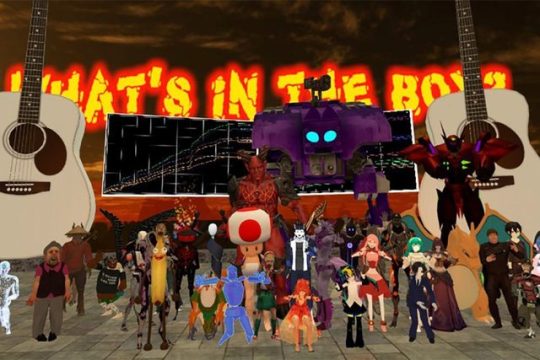
IN: 0407
VRChat CCO: ‘We Weren’t Ready’ For Everything To Be ‘On Fire All The Time’
It’s been a while since we really checked in on VRChat. In fact, we haven’t visited its virtual hallways since it got a big $4 million investment round from HTC and other investors last year. The platform allows users from around the world to meet up, make friends, hang out, and create their own digital avatars and immersive VR worlds. In many ways it’s shaping up to sort of be a Second Life 2.0 with VR integration as the main focus.
The social VR app had been slowly building up its user base over time as planned, until suddenly late last year, that all changed.
Like most things on the internet, it’s difficult to trace events back to their original source because of how quickly things spread, but right around the beginning of December popular streamers and YouTubers started playing the game heavily. This attracted thousands of new players since VRChat is not only free, but allows non-VR users to play as well.
“We had originally projected we’d be at maybe one or two thousand concurrent users by now, but we spiked up to about 20,000 concurrent users just a couple of months ago,” said Ron Millar, Chief Creative Officer of VRChat, during a meeting we had inside the social VR app. “Basically we had this strategy in place and went out to have a big offsite meeting to discuss plans of a bunch of features we wanted to put into VRChat, but that all halted when the traffic went through the roof at the start of December.”
For perspective, let’s compare that to other well-known and popular games on Steam right now. As of the time of this writing, midday on a Friday afternoon, 31,000 people are playing Civilization VI, a new entry in an insanely popular strategy game series and 15,000 are playing SMITE, one of the world’s most popular competitive MOBA games. Reaching 20,000 concurrent users, even if briefly, is no small feat.
So just like that everything changed. Before long over a million people had registered an account with VRChat, then two million, and now it’s close to three million according to unofficial data tracking site, SteamSpy. That’s incredibly fast growth.
“We just exploded,” continued Millar. “I was already working 16-hour days including weekends sometimes so we were all like, ‘Phew, it’s Christmas, we can take a little break,’ and nope. Not at all. A lot of us had to man the stations in the middle of doing things with family…all of a sudden our server bill skyrocketed.”
Free internet platforms are places often overrun by trolls, bullies, and otherwise negative people. VRChat was no different. Before long users were bombarding the platform with racist and sexist memes to the point that VRChat was getting absolutely overwhelmed.
“All of that happened, plus the notoriety of the memes, and suddenly you’re the hot thing that all the cool kids and bad kids want to see and come in and mess with you,” said Millar. “It’s hard to control. We ban people, but then they go rally all their friends on a Discord server somewhere and come back with an army of hackers. That stuff was happening really badly but we had to pivot our entire team, plus hiring new people at Christmas time, to try and handle moderation and hold down the fort. We just had to pivot the whole company and make sure the security holes were patched. We just weren’t ready for this wave this fast, and we could have been, but projections just weren’t looking like they’d get so crazy that fast. All of our plans got blown apart, so we had to pivot with everything on fire all the time.”
The issue was exacerbated by the fact that VRChat can be played by anyone inside of or outside of VR as well. That quite literally opened the floodgates. But even still, Millar admits that so many people have bought VR headsets after trying VRChat outside of VR that the trade-off will be worth it for the community as a whole.
But those issues aren’t what VRChat is about and aren’t what it should be known for.
Since the issues began VRChat has released an Open Letter to the Community expressing their desire to try and rectify mistakes and address rampant “harmful” behavior.
“We’re a small team so it’s difficult to keep up,” admitted Millar. “People come into VRChat and they don’t realize we’re not fully released, they don’t realize we’re a small team, and they don’t realize a lot of things. People just wonder why we ‘allow’ these things to happen.”
It has certainly been a whirlwind, but it appears to be dying down. I’ve spent a few hours in the platform at various points throughout the past week or so and never once did I encounter a Ugandan Knuckles, any hateful speech, or harmful behavior at all. I saw some worlds that I could visit that clearly were labeled as festering hubs of memes so I stayed away. That’s definitely progress from where it was a month or two ago.
As the company continues to grow things like this will happen, especially for something that’s an evolving online ecosystem. We’re going to dive back into VRChat later this week to get more detail around its vision for the future and why it should earn a place among the most revered VR apps, not the most ridiculed.
“[VRChat] has just become like this really crazy, living, breathing organism,” explained Millar. “Almost like a box with tentacles coming out of it.”
Well said. Check it out over on Steam for free right now to see the tentacle box for yourself.
youtube
0 notes
Photo

IN: 0406
Spielberg's Ready Player One – in 2045, virtual reality is everyone's saviour
https://www.theguardian.com/film/2018/jan/02/steven-spielberg-ready-player-one-in-2045-virtual-reality-is-everyones-saviour
youtube
0 notes
Photo
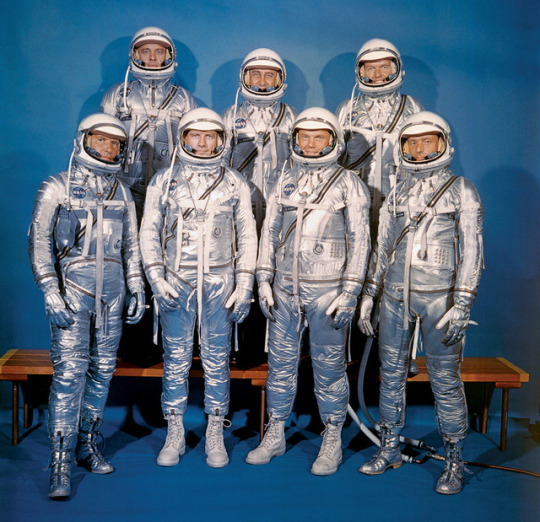
IN: 0405
DOUG WHEELOCK never really liked his spacesuit. “It may look cool, but it’s 35 years old, smells like a locker room and there’s some discolouration on the inside,” he says. Yet that dilapidated old thing was all that stood between him and deadly cold nothingness during the NASA astronaut’s six spacewalks. “It’s actually kind of scary when you think about it,” he says.
Wheelock is talking about the puffy-looking white suit with the reflective visor that NASA calls the Extravehicular Mobility Unit (EMU). These suits are among the most famous pieces of clothing ever worn, but they are well past their shelf life.
0 notes


